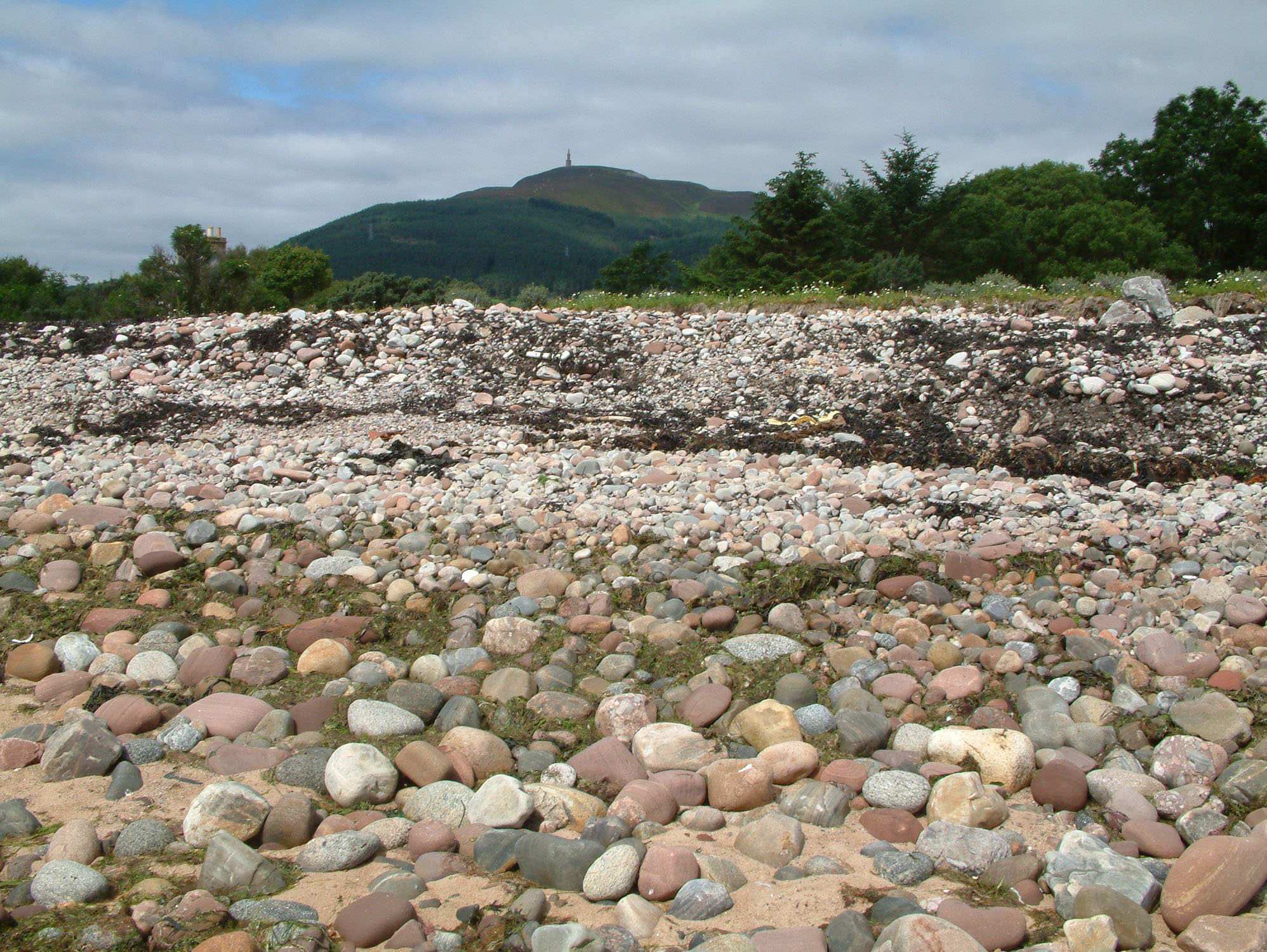Golspie is famous for the castle of Dunrobin. However, few people know that, just below the castle on the foreshore, fossils can be collected in Jurassic rocks.
DIRECTIONS
♦ Head towards the town of Golspie, where there are a number of car parks along the promenade. You can park here and walk north towards Dunrobin Castle. However, it is quite a long walk. Once you are at the location, you will have a clear view of the castle.
♦ The only way to avoid this long walk is to park at the castle itself. Access can be made from here onto the foreshore, but you may have to pay for a ticket to park.
♦ Ref: 57.97456°N, 3.95980°W
PROFILE INFO
FIND FREQUENCY: ♦♦♦ – Although the Jurassic rocks at Golspie are highly fossiliferous, fossils are quite difficult to find. This is because a good scour is required to expose these rocks.
CHILDREN: ♦♦♦ – Golspie is ideal for family trips. Its beautiful views, beaches and the spectacular castle, together with shops nearby, make this an ideal day out
ACCESS: ♦♦♦ – The car park is very close to the castle and near to toilets. You do not need to walk very far from here. Parking can also be found near to the shops and food outlets in the town.
TYPE: – There are no cliffs at Golspie. All of the fossils come from rocks from the lowest part of the foreshore, exposed during scouring tides.
FOSSIL HUNTING
Within the Jurassic rocks on the foreshore, you can find ammonites, belemnites and shells. However, many of the rocks will need to be split. You will also need to search for these rocks, since only a very small percentage is Jurassic in age from the Lias. Fossils from Triassic rocks are very rare, but, in the past, fragments of fish have been found. These may have been washed up from further up the cliffs or from the river that feeds into the sea nearby (Golspie Burn).
There is a major fault near Dunrobin Castle, along the foreshore. Most of the rocks here are Triassic, but if you look carefully, you will see some Jurassic rocks too. You really need a good scour to clear away the seaweed and shingle; otherwise you will only have a small chance of finding fossils. Look for blue-coloured rocks similar to the Blue Lias limestone and, if you find any, split them. Be sure you check the river banks, where the river feeds onto the foreshore.

GEOLOGY
The best exposures are from the Dunrobin Formation, which are found during scouring conditions near Dunrobin Castle.
The Lower Jurassic Dunrobin Bay Group is exposed, showing the Golspie Formation (Rhaetian- Hettangian) showing typically variegated, mottled mudstone with occasional thin fine-grained sandstone. The Dunrobin Bay Group comprises mudstones, sandstones and siltstones of the constituent formations: Orrin Formation, Lady’s Walk Formation, Mains Formation, Golspie Formation. The Group is almost equivalent to Dunrobin Bay Formation (DRB) onshore, although subdivided differently.
The Dunrobin Bay Formation is redefined to include as its basal member the Dunrobin Pier Conglomerate which was previously assumed to be unfossiliferous and tentatively dated as Rhaetian (Late Triassic).
The sedimentary rocks of this New Red Sandstone time are present beneath the waters of the Moray Firth, but onshore they occur only on the southern side of the firth near Elgin and on the northern side of the firth near Golspie.


SAFETY
Common sense when collecting at all locations should always be used and prior knowledge of tide times is essential. Although you cannot get cut off at Golspie, the foreshore can be very slippery. Therefore, wear suitable footwear.
EQUIPMENT
The rocks at Golspie often contain Jurassic fossils. The rocks containing them will need to be split open, so you will need the right tools. These include hammers, chisels and safety goggles.
ACCESS RIGHTS
 Scotland’s fossil resource is at risk of abuse and damage, and so we must all safeguard and managed fossil collecting to ensure its survival for future generations. For this reason it is VITAL you read and adhere to the Scottish Fossil Code for ALL sites in Scotland.
Scotland’s fossil resource is at risk of abuse and damage, and so we must all safeguard and managed fossil collecting to ensure its survival for future generations. For this reason it is VITAL you read and adhere to the Scottish Fossil Code for ALL sites in Scotland.
It is important to follow our ‘Code of Conduct’ when collecting fossils or visiting any site. Please also read our ‘Terms and Conditions‘
LINKS
♦ Buy Fossils, Crystals, Tools
♦ Location Discussions
♦ Deposits Magazine
♦ Join Fossil Hunts
♦ UK Fossils Network















